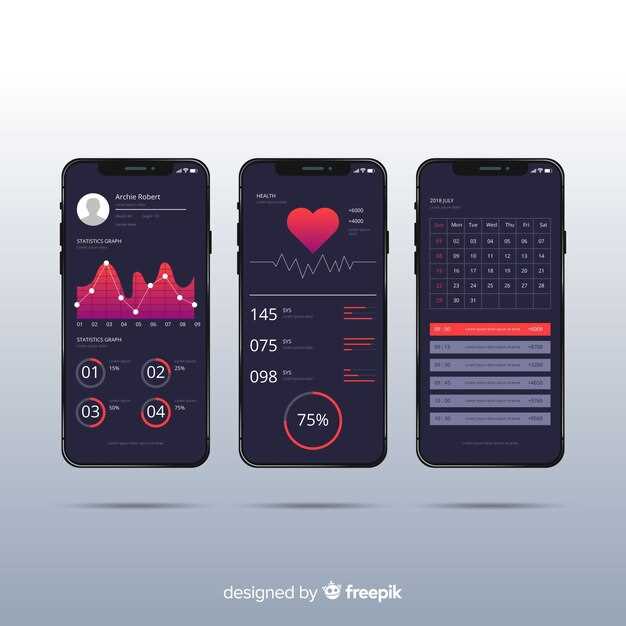Imagine having a brilliant idea. One that could revolutionize the way people interact with technology. It’s exciting, right? Yet, the journey from concept to reality can be daunting. So, what’s the first step? Crafting a basic, functional version of your concept is crucial. This initial version allows you to test the waters without a huge investment.
Skipping the technical jargon, let’s talk about simple iterations. The essence lies in keeping things minimal yet functional. Focus on the core features only. Leave out the extras. This approach not only saves time but also mitigates risk. By putting out a fundamental version early, you receive feedback sooner. Are users loving it or facing issues?
Feedback is your goldmine. Collect insights and tweak your product accordingly. This manageable version helps you pivot quickly. No sprawling feature lists to boggle down progress. The more nimble you are, the better. You adapt. You evolve. And in the end, you save both time and resources. Moreover, initial users feel part of something growing, which encourages loyalty.
Creating this primary version isn’t just about coding and design. It involves understanding the market. What do users need? What can you offer that others can’t? Recognizing pain points and knowing your target audience is vital. Validate your idea before expanding it. Remember, a successful product starts simple and grows complex over time.
Understanding the Basics of an MVP
Imagine you have a groundbreaking concept for a new digital product. The goal isn’t to perfect it right away. Instead, you need to create a simplified version of your idea. This version focuses on core functionalities. This way, you can quickly assess the market demand. Gathering feedback from early adopters will be crucial.
In essence, the primary objective is to validate your hypothesis. Starting small allows you to pivot efficiently. Rectifying mistakes early on saves time and resources. It also helps in identifying what truly matters to the audience. This strategic approach is critical for future success.
Core Elements

Several key components should be considered when embarking on this journey. Simplicity is paramount. Only include features that offer immediate value. Anything else can wait. This means prioritizing the ‘must-haves’ over the ‘nice-to-haves’. Clarity in this stage cannot be overstated.
Another element is user engagement. Actively seek user feedback right from the onset. This will inform any adjustments necessary. It’s about creating a loop where continuous improvement is possible. Data-driven decisions often lead to better outcomes.
Benefits and Risks

The primary benefit of this approach is risk mitigation. By gauging interest early, you avoid investing heavily in a concept that may not resonate. This method also fosters innovation. Constraints often lead to creative solutions. On the flip side, going this route also presents certain challenges.
One major risk is misinterpreting user feedback. Initial reactions can sometimes be misleading. It requires discernment to separate genuine insights from noise. Thus, well-defined metrics are necessary. These metrics guide the decision-making process. Focus on actionable data rather than vanity metrics.
By understanding these basics, the path ahead becomes clearer. Starting with a lean version of your idea sets a solid foundation. From here, iterative improvements pave the way toward a successful product. Maintain an adaptive mindset. In doing so, you position yourself for growth and innovation.
What is an MVP?
The concept revolves around creating the simplest version of a product. It’s all about focusing on the core functionalities. This approach helps in testing the basic idea with minimal resources. It’s a strategy designed to deliver the necessary components rapidly. By doing this, you can gauge user interest and collect feedback.
An MVP allows you to:
- Test the waters with a simple version of the product.
- Receive early feedback from real users.
- Save resources by concentrating on essential features.
- Validate your concept before a full-scale launch.
Instead of spending months developing a fully-featured application, this approach advocates for effort in functionality that’s truly critical. It’s a lean way of verifying assumptions about a product. This can prevent wasted time, money, and energy on ideas that don’t resonate with the target audience. Iterative testing and imperfection acceptance are at the heart of this methodology.
In essence, the goal is to quickly develop a product with just enough functionality for early adopters. If these users find value in the product, more complex features can be added systematically. This cycle of feedback and improvement ensures the product evolves based on actual user needs. It’s a practical and efficient way to bring ideas to market while minimizing risks.
Benefits of Creating an MVP
Launching a product can be overwhelming. Starting small offers distinct advantages. Early feedback is invaluable. Cost savings are significant. Avoiding large-scale failures is crucial. This initial version allows you to test the waters without diving in headfirst, providing insights that can shape the future iterations and functionality effectively.
Faster Time to Market

Developing a basic version of the product means faster launch. The quicker you enter the market, the sooner you start gathering user feedback. This early release can help you stay ahead of competitors. Rapid iterations improve user satisfaction. It enables you to rectify any mistakes quickly. Essentially, it streamlines your path to a polished final product.
Cost Efficiency
Spending less on the initial version minimizes financial risk. Allocating resources to a smaller project saves money. It allows better budget management. You get to see if the product meets demands without hefty investments. Consequently, you avoid wasting money on an idea that might not work. This lean approach lets you pivot or enhance based on real-world data.
In summary, creating an initial version first not only saves time and money but also builds a strong foundation through early user insights and continuous improvement, ultimately setting the stage for a successful and well-received product.
Common Misconceptions About MVPs
When starting a new project, it’s crucial to clear up certain myths. These myths can lead to poor decisions and hamper progress. Let’s dive into some widespread misunderstandings. This will help you avoid common pitfalls and set realistic expectations. It’s all about clarity and efficiency.
MVPs Need to be Perfect: This couldn’t be further from the truth. The goal is to release a basic version, not a flawless one. It should solve a problem but doesn’t have to be polished. Focus on the core functionality and avoid getting bogged down in perfectionism. People often forget that iteration is key.
Only for Startups: Many believe these initial versions are just for new businesses. Wrong! Even established companies use them as a part of their innovation strategy. It helps to test new ideas quickly without huge investments. This approach can benefit projects of all sizes.
Cheap Equals Low Quality: A more affordable initial version does not mean it is of inferior quality. The focus is on essential features, not extras. This allows for cost savings while still delivering value. Efficiency is the aim, not extravagance.
Users Expect Perfection: It’s easy to assume users demand a flawless experience right away. In reality, early adopters understand they are part of a trial phase. They provide valuable feedback that guides further improvements. This iterative process is invaluable.
Not Meant for Commercial Use: Some think initial versions are purely experimental. Actually, these early iterations can be commercialized effectively. If it solves a user problem, it can be marketed. Real-world application often reveals its true potential.
Misunderstandings can derail your efforts before you even start. By recognizing these common myths, you can proceed with clearer vision and greater agility. Remember, the aim is progress, not perfection from day one.
Steps to Develop a Mobile App MVP
Creating a basic version of an application can be an exciting journey. It’s about focusing on essential features and bringing them to life. The process ensures that you meet user needs efficiently. The primary goal is to validate the concept quickly. Now, let’s dive into the fundamental steps.
1. Ideation and Research
Start by refining your idea. Research the market thoroughly. Identify your target audience. Understand their needs and preferences. This research helps you create a more focused product. Moreover, it provides insights into what features to prioritize.
2. Define Core Features
List all functionalities your application might offer. Highlight the most critical ones. These are the features that solve your users’ main problems. Keep it simple and avoid unnecessary complexity. At this stage, less is more.
3. Create User Stories
Translate your features into user stories. These are short, simple descriptions. They focus on what the user wants to achieve. For instance, “As a user, I want to log in seamlessly.” This approach ensures that your team understands the user’s perspective.
4. Develop a Prototype
Next, build a basic prototype. This is a visual representation of your idea. It doesn’t need to be fully functional. Instead, it should convey the flow and layout of the application. Use wireframes or mockups for this purpose. A prototype helps you gather initial feedback from stakeholders.
5. Rapid Development
Begin coding the primary functionalities. Use agile methods for this phase. It’s crucial to keep the development cycle short. Frequent testing allows you to identify and fix issues early. Remember, efficiency is key here.
6. Gather Feedback
Once the initial version is ready, release it to a small group. This can be a beta version. Collect user feedback diligently. Real-world usage often reveals unforeseen problems. The more you listen to your users, the better your product becomes.
7. Iterate and Improve
Analyze the feedback carefully. Identify the most common issues and bottlenecks. Make necessary adjustments and enhancements. This iterative process ensures continuous improvement. With each cycle, your application becomes more refined and user-friendly.
You now have an actionable plan. Each step brings you closer to a successful release. Stay focused on what’s essential, listen to user feedback, and keep improving. The journey doesn’t end here; it’s just the beginning of an ongoing process.
Identifying Core Features
At the heart of developing any application lies the crucial step of pinpointing the most vital functionalities. It’s about zooming into what users truly need and discarding the extraneous. Simplification is key. Initial features should solve core problems. Prioritize what delivers the most value. This focus can dramatically influence the overall success.
Understand User Needs
Start with knowing your audience. User research is indispensable here. Surveys, interviews, and usability tests uncover real pain points. Create user personas. Segregate them based on demographics, behaviors, and preferences. This provides a clearer image of their requirements. Analyzing competitors is also insightful. They reveal what works and what doesn’t. However, merely copying isn’t the way. Differentiate by solving unmet needs.
Feature Prioritization
Having a potential feature list isn’t enough. Rank these features. Which ones solve the main problems? Focus on features that enhance user experience. Avoid complexity at the onset. Utilize methods like:
- MVP Matrix
- MoSCoW Method
- Value vs Complexity Quadrant
Each of these methodologies helps in identifying which functionalities should be rolled out initially. The balancing act between value addition and implementation difficulty is crucial. Remember, it’s not about adding numerous features but introducing the right ones. Think minimal yet impactful. Optimize continuously based on feedback. Your core features lay the groundwork for future development.
Choosing the Right Technology Stack
Picking the appropriate tools is crucial. It influences performance and future scalability. It’s not just about trends. It’s about what suits your needs. Consider team expertise. Emphasize project requirements. Every decision impacts success.
The choice between native and cross-platform development is essential. Native solutions often lead to better performance. They utilize all device functionalities. However, cross-platform frameworks, like Flutter or React Native, speed up development. They allow code reuse across various platforms. Weigh your priorities carefully.
Backend technologies play a pivotal role too. If you need real-time data, consider using Node.js. It handles numerous simultaneous connections efficiently. For more traditional database interactions, frameworks like Django or Ruby on Rails may be better suited. These options offer proven reliability.
Database selection is another critical factor. SQL databases, such as MySQL or PostgreSQL, provide structured data handling. They are robust and widely supported. NoSQL databases, like MongoDB, offer flexibility for unstructured data. The nature of your data will guide this choice.
Don’t overlook cloud services. They offer scalable storage and computing power. AWS, Google Cloud, and Azure are popular choices. Evaluate cost, support, and specific features. Cloud services can significantly reduce infrastructure management overhead.
Integrating third-party services can enhance functionality. Consider analytics, payment gateways, and notification services. Make sure they fit seamlessly. Poor integration can disrupt user experience.
Finally, keep security in mind. Incorporate best practices from the start. Ensure encryption, data protection, and regular updates. A secure foundation builds trust with users and stakeholders.
Building and Testing Your MVP
Let’s dive into the creation and evaluation of your core product. This phase is crucial. Here, the emphasis lies on functionality. You need to ensure that the key features are working as intended. Testing should not be an afterthought. It’s an ongoing process. Every feature, big or small, needs validation. Mistakes should be spotted early to avoid future headaches. By focusing on a streamlined version at this stage, you minimize complexity and maximize efficiency.
Defining Core Features
First, identify the essential functionalities. What are the absolute must-haves? Prioritize these above everything else. Fancy features can wait. The goal is to deliver value. Ensure each selected feature truly adds to the user experience. Think about what users need most. Don’t fall into the trap of adding non-essential elements. Clearly define what each feature should achieve. This clarity prevents scope creep. Stick to the basics and do them well.
Prototyping and User Feedback
After outlining core functions, create a prototype. This could be a clickable model or a basic working version. Share it with a small group for feedback. Real user input is invaluable. It helps refine your features. Identify what works and what doesn’t. Don’t ignore criticisms. They are opportunities for improvement. Iterate based on feedback. This cycle of prototyping and refining sharpens your product. Ensure the prototype is as close to the envisioned product as possible, to give users a real sense of what to expect.
Next, perform rigorous testing. Unit tests verify individual components. Integration tests ensure components work together smoothly. User acceptance testing (UAT) involves real users. They help identify usability issues. Automated tests can speed up this process. Invest time in setting up a good testing environment. Errors at this stage are less costly than after launch. Deploy the MVP in a controlled environment. A beta launch can be an effective strategy. Monitor performance and gather metrics. This data-driven approach aids in making informed decisions. Analyze the data, adapt, and keep improving.
In conclusion, the journey from concept to a functional version requires careful planning and relentless testing. Focus on essentials, gather user feedback, and refine continuously. Testing isn’t a one-time task; it’s an iterative process. The end goal is to create a streamlined product that delivers real value to users.
Video:
How to Build An MVP | Startup School
How to Build An MVP | Startup School by Y Combinator 869,781 views 1 year ago 16 minutes
Questions and answers:
What is an MVP in the context of a mobile app?
An MVP, or Minimum Viable Product, in the context of a mobile app, is a version of the app that includes only the essential features needed to solve a core problem for its users. The goal of an MVP is to allow developers to launch the app quickly, gather user feedback, and validate the product idea before investing significant time and resources into full-scale development.
How do I identify the core features for my app’s MVP?
Identifying the core features for your app’s MVP involves understanding the primary problem your app aims to solve and focusing on the functionalities that address that problem directly. Begin with user research to identify the key pain points and needs of your target audience. Then, prioritize features that deliver the maximum value with the least amount of effort. Use techniques such as user stories, personas, and customer journey mapping to help clarify which features are essential for initial launch.



